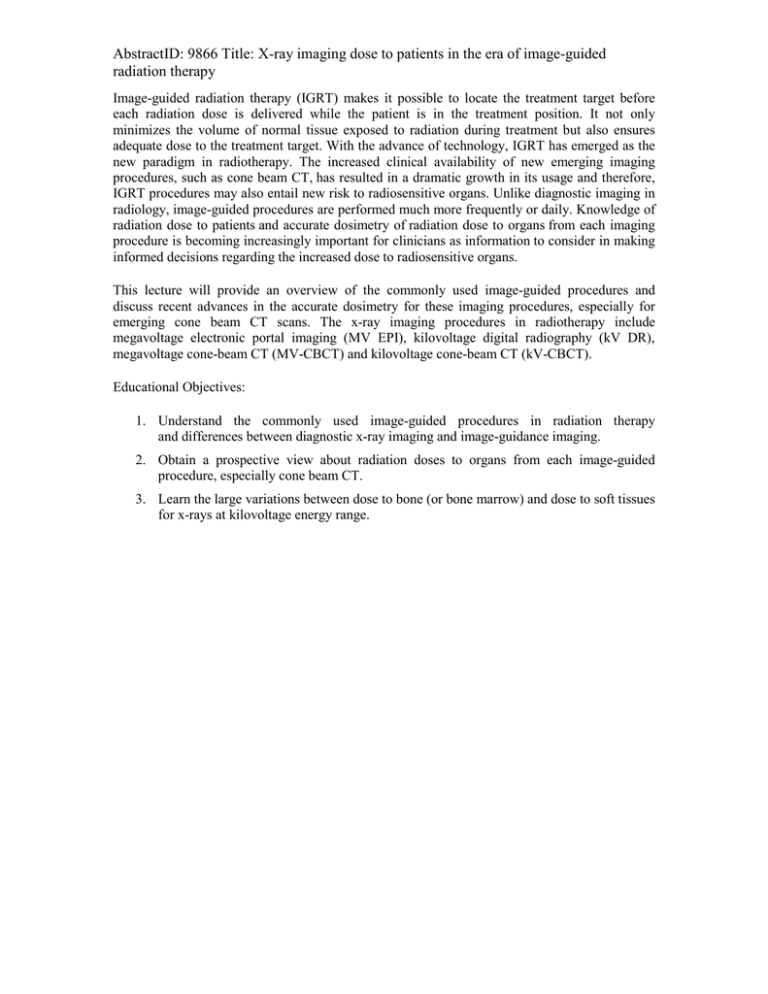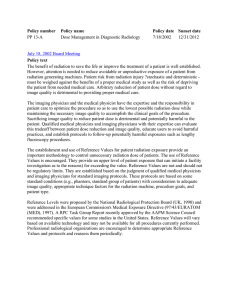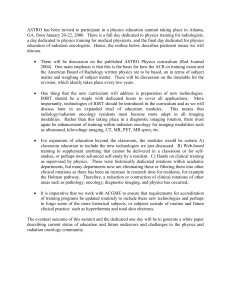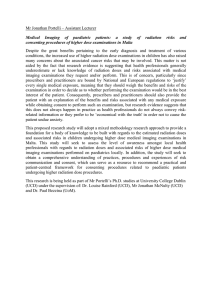AbstractID: 9866 Title: X-ray imaging dose to patients in the... radiation therapy
advertisement

AbstractID: 9866 Title: X-ray imaging dose to patients in the era of image-guided radiation therapy Image-guided radiation therapy (IGRT) makes it possible to locate the treatment target before each radiation dose is delivered while the patient is in the treatment position. It not only minimizes the volume of normal tissue exposed to radiation during treatment but also ensures adequate dose to the treatment target. With the advance of technology, IGRT has emerged as the new paradigm in radiotherapy. The increased clinical availability of new emerging imaging procedures, such as cone beam CT, has resulted in a dramatic growth in its usage and therefore, IGRT procedures may also entail new risk to radiosensitive organs. Unlike diagnostic imaging in radiology, image-guided procedures are performed much more frequently or daily. Knowledge of radiation dose to patients and accurate dosimetry of radiation dose to organs from each imaging procedure is becoming increasingly important for clinicians as information to consider in making informed decisions regarding the increased dose to radiosensitive organs. This lecture will provide an overview of the commonly used image-guided procedures and discuss recent advances in the accurate dosimetry for these imaging procedures, especially for emerging cone beam CT scans. The x-ray imaging procedures in radiotherapy include megavoltage electronic portal imaging (MV EPI), kilovoltage digital radiography (kV DR), megavoltage cone-beam CT (MV-CBCT) and kilovoltage cone-beam CT (kV-CBCT). Educational Objectives: 1. Understand the commonly used image-guided procedures in radiation therapy and differences between diagnostic x-ray imaging and image-guidance imaging. 2. Obtain a prospective view about radiation doses to organs from each image-guided procedure, especially cone beam CT. 3. Learn the large variations between dose to bone (or bone marrow) and dose to soft tissues for x-rays at kilovoltage energy range.






